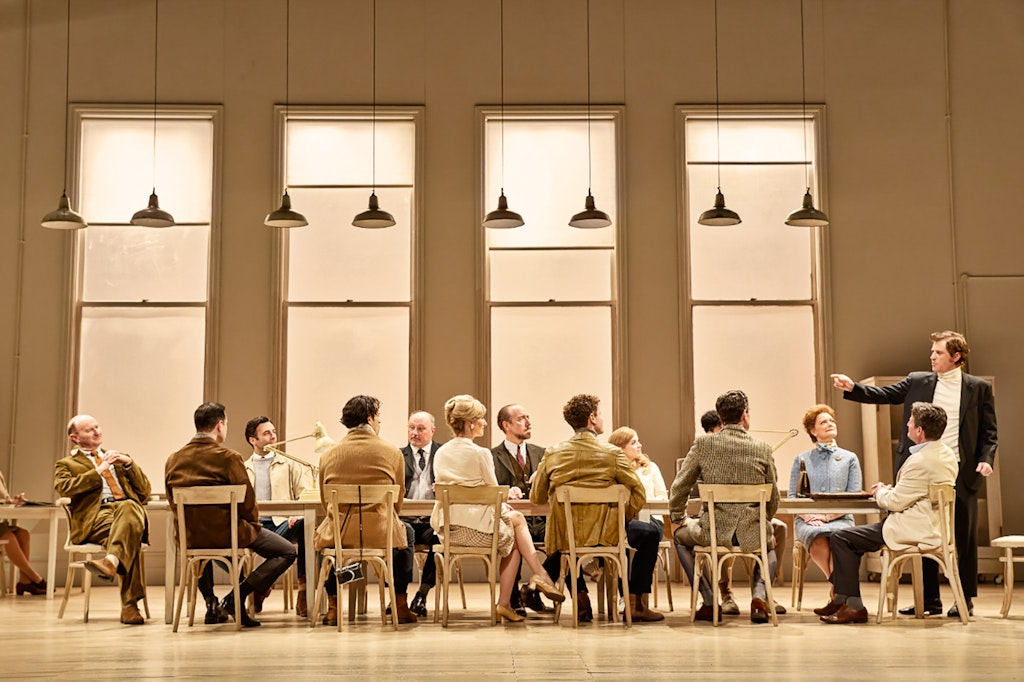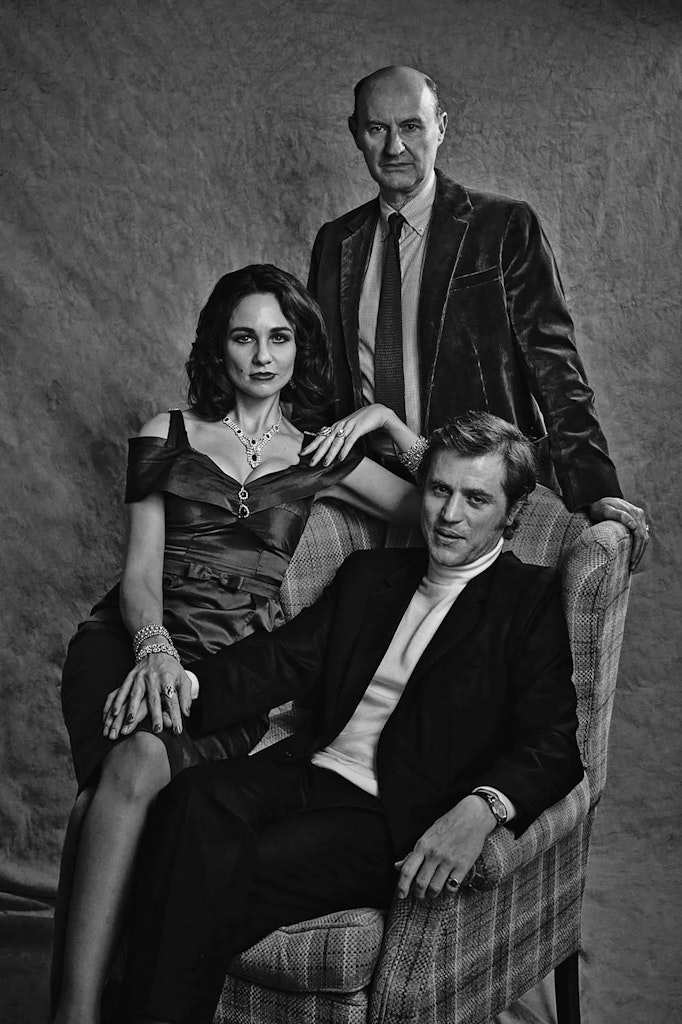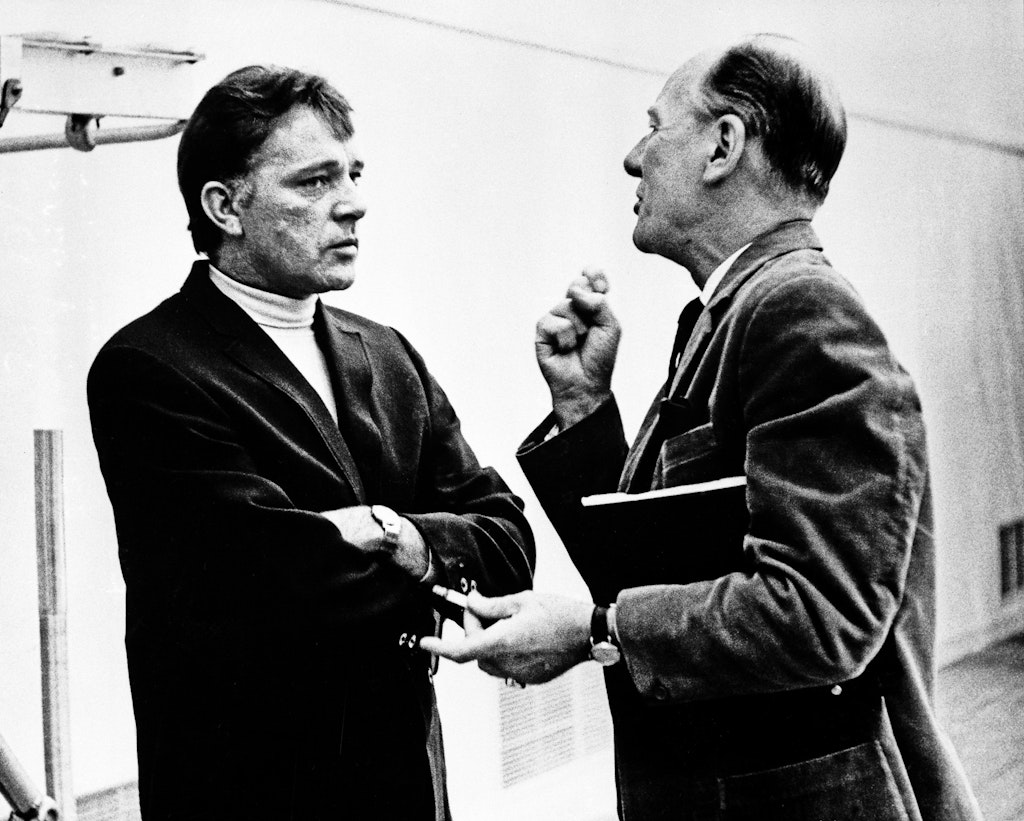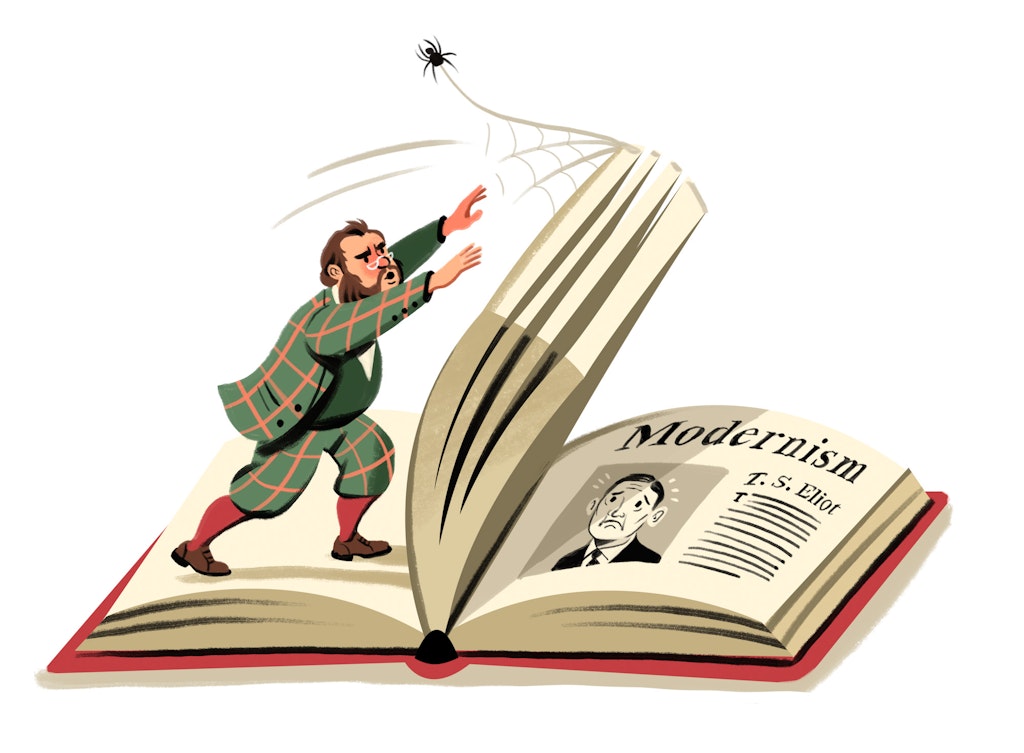The greats’ Dane
The story of Burton and Gielgud’s famed Broadway production of Hamlet has been turned into a West End play
This article is taken from the March 2024 issue of The Critic. To get the full magazine why not subscribe? Right now we’re offering five issues for just £10.
Theatrical legend has it that when Richard Burton and Peter O’Toole were filming Becket in 1963, they decided that they should each play Hamlet on stage. These were two legendarily thirsty actors, and it is possible that drink may have been taken. They flipped a coin to determine which of them should be directed by John Gielgud and which by Laurence Olivier, the two greatest Hamlets of the previous era. Burton got Gielgud. History does not record who was thought to have won the toss.
Sir John Gielgud, from a prominent theatrical family, first saw Hamlet in 1912 when he was eight, and what eight-year-old doesn’t love a four-hour blank verse tragedy about an existential crisis? Gielgud would go on to play the Dane five times between 1930 and 1946. Burton, a coal miner’s son, was a great admirer. However, the rehearsals in Toronto for their 1964 Broadway production were fraught, with director and leading man continually clashing.

Those differences are brilliantly dramatised in The Motive and the Cue, Jack Thorne’s hit play about the production. Directed by Sam Mendes, the show is currently in the West End and is possibly itself destined for Broadway. Mark Gatiss plays Gielgud, Johnny Flynn is a volatile Burton.
Thorne has drawn on books written by two of the original cast members about the rehearsal process. William Redfield, who played Guildenstern, wrote Letters From An Actor (reissued later this year by Applause). Meanwhile Richard L. Sterne, who had a two-line role, went to the extraordinary lengths of secretly taping rehearsals using a recorder hidden in a briefcase and transcribing the tapes every night. He even hid under a stage for six hours to record Gielgud and Burton in a private meeting.
Sterne claimed that when he later told Gielgud and Burton about his covert activities, they were amused. Perhaps they were. Flynn has said that when he tracked down Sterne’s hard-to-find book, John Gielgud Directs Richard Burton in Hamlet, it was the copy that had been owned by Burton.

The fiery Welshman’s involvement meant that the production was a media circus from the off. The biggest film of the previous year, Cleopatra, had starred Burton as Mark Antony and Elizabeth Taylor as the Egyptian queen. The pair, both married to other people at the time — Taylor to her fourth husband — had begun an affair during filming. It was a high-profile scandal that even the Vatican weighed into, condemning the relationship as “erotic vagrancy”.
Now Burton and Taylor were the world’s biggest celebrity couple. Taylor was the highest-paid star in the world. Burton was on half a million a movie. The couple were even given their own nickname. Before “Brangelina” there was, the somewhat unfortunate sounding, “Dickenliz”.
Consequently, on 30 January 1964 when the cast arrived at the Toronto hotel where most of them were staying, they found the lobby besieged by hundreds of fans and journalists. That afternoon there was an hour-long press conference. And then it was off to the rehearsal hall, where they had to push through another crowd to get inside.
Prior to their first read-through, Gielgud described to the cast his big idea, which was to stage the production as if it was “a pre-dress rehearsal run-through. As few props and gimmicks as possible.” For the actual show, the actors would wear whatever normal clothes they would typically wear to a rehearsal. Of course, this was a gimmick in itself. Nevertheless, Gielgud hoped it would “free the verse from all its fustian trappings”.
Redfield and Sterne’s books paint a vivid picture of the rehearsals. Gielgud, nearing 60 and resolutely old school, arrives and leaves wearing a Siberian-style fur hat. He chain-smokes English Oval cigarettes, allowing one to dangle from the corner of his mouth for minutes at a time, accumulating a long ash which then falls on his suit. He has the entire text of the play by heart and wells up with tears when an actor performs particularly well.
At the first reading, Burton, who had played Hamlet before, races through it in a shouty fashion, “as though,” according to Redfield, “fire were consuming the theatre and he had bloody well to get out of the building in order to save his hide”.
But this, it quickly becomes apparent, is not the Gielgud way. “Have a care as to shouting … Don’t overuse it,” he later tells Burton. Gielgud favours an approach to Shakespeare’s verse that the younger actors, including the 38-year-old Burton, considered old-fashioned. Privately, Burton says that he thinks Gielgud’s “singsong” diction is outdated.

And as rehearsals progress, some of the other actors become unhappy. Gielgud wants them to find their own way into the parts but his vagueness unsettles them. He frequently leaves exchanges unrehearsed. He insists on particular inflections which the players feel make no sense. Gielgud wants Hamlet to say “What a piece of work is a man … in form and moving, how express and admirable.” Burton goes with “express”.
Redfield writes that Burton “never says no to John Gielgud. That would be rude. But he frequently does not do as Gielgud asks. In fact he usually does not do as Gielgud asks.”
Director and star do openly argue about how to approach the closet scene, in which Hamlet kills Polonius. Gielgud wants Burton to play the moment triumphantly, in order to give the audience a thrill. Burton thinks that fundamentally wrong and sarcastically suggests getting a brass band into the closet which would also give the audience a thrill. Gielgud finally simply murmurs “Let’s keep working at it, shall we?”
This conflict may have been exacerbated by Burton’s heavy drinking. At the close of rehearsal every day, Burton invites a selection of the actors to his dressing room for what Redfield calls “a spot of wassail”. And one evening Redfield is among a group of the cast summoned to Burton and Taylor’s five-room hotel suite for a drink.
Taylor is possessed of a devastating sexual charisma that can stun a heterosexual man at 50 paces
He is greeted by Taylor — “a knockout … a more striking beauty in person than on screen” — who mixes him a drink. Burton is baffled by Redfield’s choice of tipple, a martini. “Whisky is simpler,” the Welshman says, adding that he couldn’t bear gin but vodka or tequila are acceptable whisky substitutes. Taylor, no slouch when it comes to booze, drinks champagne.
In The Motive and the Cue, she is played by Tuppence Middleton and depicted as a shrewd peacemaker but also as possessed of a devastating sexual charisma that can stun a heterosexual man at 50 paces, and which even the gay Gielgud finds beguiling. “I heard your eyes were dazzling but I wasn’t prepared how dazzling,” he tells her in the play.
Drinking after the end of the working day is one thing, drinking during it another. Redfield records an impromptu but much-needed line rehearsal in a hotel room which descended into boozy boisterousness when Burton declared: “To hell with Hamlet — let’s get pissed.” Sterne mentions Burton having a tray of Scotch and sodas brought to the rehearsal hall “for the group”. In Thorne’s play this becomes an electrifying scene in which an inebriated Burton turns on Gielgud and humiliates him in front of the cast.
Burton was an alcoholic. By the time he made Where Eagles Dare, four years later, he was consuming several bottles of vodka a day. A 1969 entry in his diary describes him on a health kick. He has a whisky and soda before lunch, “about” two glasses of Lafite ’60 with lunch, and “two or three” brandies after lunch with “a couple more” whisky and sodas in the evening. This was him being abstemious; on the set of the 1974 film The Klansman, Burton was drinking so much that his scenes had to be shot with him either sitting or lying down.
The previous night’s dress rehearsal had been a disaster, with Burton forgetting his lines
The first public performance of Hamlet, in Toronto, was set for 25 February. The previous night’s dress rehearsal had been a disaster, with Burton forgetting his lines. By now, the other actors were panicking that they were going to look like idiots.
And yet … it was alright on the night. Not brilliant, but alright. Taylor, whose arrival caused a huge fuss, overheard an elderly lady marvelling “Isn’t it full of quotations?” The Toronto critics hated it, but the run sold out and in New York, it set a new record as Broadway’s longest-running Hamlet with 138 performances (Gielgud held the previous record of 132). The New York Times praised Burton’s “performance of electrical power and sweeping virility”. Crowds of 2,000 gathered nightly at the stage door to catch a glimpse of him.
What of the O’Toole Hamlet? Filming commitments meant he could do only 27 performances in the inaugural production of the National Theatre Company, which had had a long, tortured gestation. He did not enjoy the experience, later describing Hamlet as “the worst bloody play ever written”.
Notices were “mixed”. Bernard Levin’s less than rave review in the Daily Mail was headlined: “After a wait of 100 years, this will do for a start.” It seems obvious who won the toss.
Enjoying The Critic online? It's even better in print
Try five issues of Britain’s most civilised magazine for £10
Subscribe














